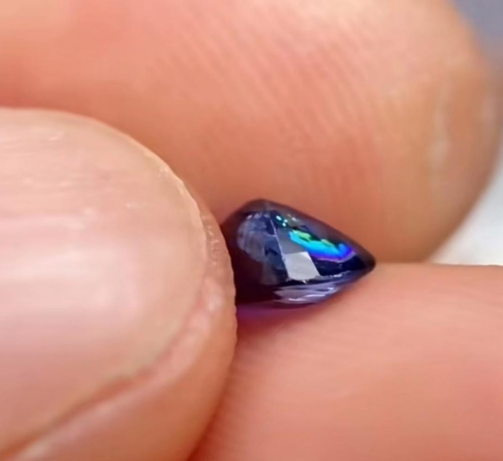2. Cracking stone refers to the phenomenon of collapse, cracking, and decay on the surface of gemstones in finished jewelry, mainly caused by improper operation during the grinding process. Cracking stone has a significant impact on the appearance and quality of gemstones, affecting their bright and smooth appearance. The quality of gemstones is also affected, making it more likely to be damaged during the wearing process.

3. Out of round refers to when jewelry is cut into a circular shape, the overall shape is not a single round shape, and the main reason is due to poor stone shape or improper hand trimming.
4. Poor sharpness is also a common defect in round gemstones, which refers to the requirement for eight plates to reach the point when cutting round stones. However, if one or several plates do not reach the point due to improper grinding force or low equipment accuracy, it is considered poor sharpness.
5. Sand holes are normal for gemstones to have inclusions or defects, but some surface defects can be removed. If the polishing is not precise enough to achieve good positioning, it is possible to leave sand holes on the surface of the gemstone, which are black, brown, or white dots.
6. Sand boundary, the reason for the formation of surface defects in this type of jewelry is similar to sand holes. It is due to the lack of precision in polishing, resulting in the connection lines between the cutting surfaces not being polished, resulting in obvious boundary marks such as white or brown. Such marks also greatly affect the appearance of the gemstone.
7. Flower tips, such as diamonds, are often cut into conical and very transparent gemstones. When viewed from the countertop, there is sometimes a small dot on the bottom surface, which is called a flower tip. It is caused by improper operation during the grinding, washing, or polishing process of the gemstone, and the appearance of a small dot indicates that the bottom tip has been damaged.
